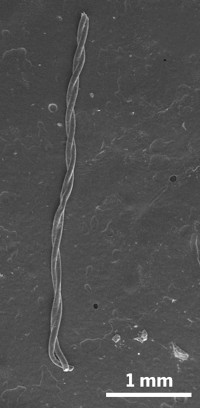Advertisement
Grab your lab coat. Let's get started
Welcome!
Welcome!
Create an account below to get 6 C&EN articles per month, receive newsletters and more - all free.
It seems this is your first time logging in online. Please enter the following information to continue.
As an ACS member you automatically get access to this site. All we need is few more details to create your reading experience.
Not you? Sign in with a different account.
Not you? Sign in with a different account.
ERROR 1
ERROR 1
ERROR 2
ERROR 2
ERROR 2
ERROR 2
ERROR 2
Password and Confirm password must match.
If you have an ACS member number, please enter it here so we can link this account to your membership. (optional)
ERROR 2
ACS values your privacy. By submitting your information, you are gaining access to C&EN and subscribing to our weekly newsletter. We use the information you provide to make your reading experience better, and we will never sell your data to third party members.
2-D Materials
Printed 2D materials make high-quality electrodes
MXene biomedical electrodes perform better than conventional ones
by Prachi Patel, special to C&EN
September 28, 2021

Using ink made of 2D materials called MXenes, researchers have made soft electrode arrays that can be used on the skin or implanted in the body (Sci. Transl. Med. 2021, DOI: 10.1126/scitranslmed.abf8629). Compared to the metal electrodes used today, they give better quality signals without the need for sticky conductive gels.
The electrodes can be printed at low cost and could be customized for individual patients, says Flavia Vitale, a chemical engineer and neurologist at the University of Pennsylvania.
MXenes, a family of 2D transition metal carbides and nitrides, are highly conductive. Vitale and her colleagues etched electrode array patterns into a cellulose-polymer substrate, infused it with a water-based Ti3C2 MXene ink, and coated the device with an insulating polymer.
They used electrode arrays to record electrical activity of the hearts and brains of volunteers through the skin. The MXene electrodes produced signals with a higher signal-to-noise ratio than commercial silver-based electrodes, Vitale says. They also placed the electrode array directly on the brains of an anesthetized pig and rat to detect brain signals.
The new electrodes do not interact with the magnetic fields needed for imaging technologies such as CT scans and MRI. Tests on tissue-mimicking materials showed that while metallic electrodes produced tiny glitches in the images, MXene electrodes did not.





Join the conversation
Contact the reporter
Submit a Letter to the Editor for publication
Engage with us on Twitter